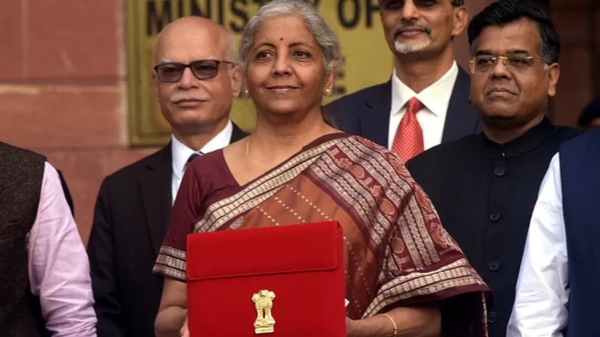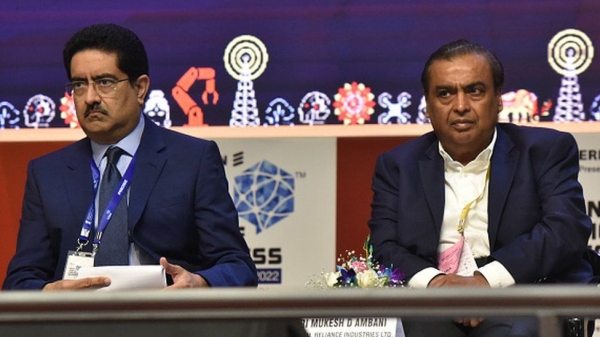Budget 2023: Can India remain a bright spot in global economy?
With a third of the world on the verge of recession after two years into the pandemic, India's economy remains a relatively bright spot in 2023. This year's GD
- by B2B Desk 2023-01-31 08:47:47
Despite being its last full budget before the 2024 general elections, Narendra Modi's government is expected to shun populism in favor of fiscal discipline. Experts say that the uneven nature of India's post-pandemic recovery requires greater support for the most vulnerable in society.
With a third of the world on the verge of recession after two years into the pandemic, India's economy remains a relatively bright spot in 2023.
This year's GDP targets have been slightly revised, but India is expected to remain the world's fastest-growing major economy for the second year in a row. Growth is likely to be in the range of 6-6.5 percent, which is impressive by all accounts.
In addition, inflation is coming down, energy prices are calming, the country continues to receive strong investment inflows, and consumer spending is gradually increasing. India is also expected to benefit from its "China plus one" strategy for global manufacturing, as companies like Apple look to increase capacity in the country as it diversifies supply chains out of China.
But the Union Budget 2023, due to be presented in parliament on Wednesday, should focus on broadening the base for economic expansion in Asia's third-biggest economy, experts say.

Uneven recovery
At the recently concluded World Economic Forum in Davos, one-line message from Gita Gopinath, Deputy Managing Director at International Monetary Fund (IMF), to politicians was to use "fiscal policy to provide support to the most vulnerable in society.”.
Despite an impressive overall GDP forecast, unemployment in India remains high: more than 10 percent in cities, according to December 2022 data from the Center for Monitoring the Indian Economy. Inequality got worse.
Recent findings by the British charity Oxfam, that India's top 1 percent owned 40 percent of its wealth, have come under great scrutiny, with many pointing to flaws in the calculation methodology.
But a host of other data sets, such as reduced demand for affordable housing, increased demand for luxury cars over two-wheelers, or for premium consumer goods over cheaper alternatives- points to a K-shaped recovery post pandemic, with the rich getting richer, while the poor worse off.
In many parts of the country's vast remote rural areas, signs of growing distress are emerging.
Delayed wages
The B2B traveled through several villages in the Purulia district of West Bengal where people are caught in the political crossfire between the federal and state governments. Official data shows that around 330 million dollars in wages under the government's Rural Jobs Guarantee programme, a crucial social barrier, have been delayed for more than a year as a result.
Sundara and Aditya Sardar, a couple who spent four months digging a pond on the outskirts of their village under the jobs scheme- Mahatma Gandhi's National Rural Employment Guarantee Scheme (MGNREGS), told the B2B they had run into debt to pay for food due to pay and they took their son out of school.
In small tribal villages, we have heard similar stories of suffering.
"The central government has stopped payments to 10 million workers in West Bengal for over a year. In times of economic hardship and high unemployment, this is inhumane and as stated by the Supreme Court in the MGNREGS case ruling on arrears" said Nikhil Day, an activist.
These delays, while severe in West Bengal, are not specific to just the state. In all, the government owes more than 500 million dollars in unpaid dues to workers under the scheme across the country.
Economist Jean Dreze blames the situation on the government's attempt to contain spending through social security schemes and allow the "vicious circle" of annual under-allocation and salary delays to continue, particularly for MGNREGS.
"There was a time when spending on the jobs program went up to 1 percent of GDP. Now it's less than half a percent. I would be very happy to see it go back to 1 percent in this budget, with a much greater effort to curb corruption in the scheme," Mr. Dreze said. ".
Spending for the Rural Jobs Scheme was cut last year and subsidies for food and fertilizer were reduced, although additional allocations were made to extend emergency support plans in the Covid era and mitigate the impact of global geopolitical shocks.


POPULAR POSTS
Union Budget 2023-24 | Everything you need to know about this year's budget
by B2B Desk, 2023-02-01 10:33:17
Union Budget app will deliver Budget 2023 in paperless form: See how to check
by B2B Desk, 2023-01-30 10:38:04
Budget 2023: Government holds 'Halwa' ceremony, marking final stage of Budget preparation
by B2B Desk, 2023-01-27 06:10:09
Budget 2023: What home buyers can expect from FM Nirmala Sitharaman?
by B2B Desk, 2023-01-24 07:37:06
5 income tax relief measures that middle class expects from Budget 2023
by B2B Desk, 2023-01-23 06:36:44
5 Major Announcements Expected From Union Budget 2023
by B2B Desk, 2023-01-20 06:16:15
Budget 2023: Will Nirmala Sitharaman provide some tax relief to India’s salaried class?
by B2B Desk, 2023-01-13 10:02:33
RECENTLY PUBLISHED

Loan EMIs to Drop as RBI Slashes Repo Rate - Full MPC December 2025 Highlights
- by Shan, 2025-12-05 11:49:44

The Agentic Revolution: Why Salesforce Is Betting Its Future on AI Agents
- by Shan, 2025-11-05 10:29:23

Pine Labs IPO 2025: Listing Date, Grey Market Premium, and Expert Outlook
- by Shan, 2025-11-05 09:57:07

Top 10 Insurance Companies in India 2026: Life, Health, and General Insurance Leaders Explained
- by Shan, 2025-10-30 10:06:42

OpenAI Offers ChatGPT Go Free in India: What’s Behind This Big AI Giveaway?
- by Shan, 2025-10-28 12:19:11

Best Silver Investment Platforms for 2025: From CFDs to Digital Vaults Explained
- by Shan, 2025-10-23 12:22:46




 Subscribe now
Subscribe now 